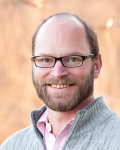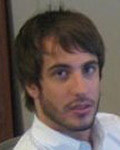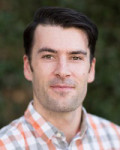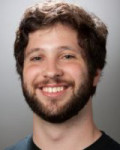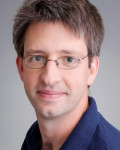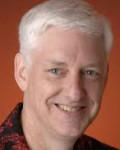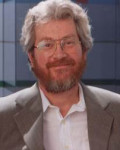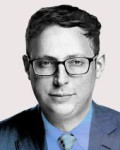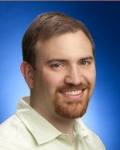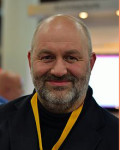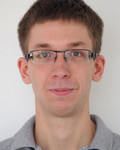
People to Watch 2016
Jennifer Priestley
Professor of Statistics and Data Science
Kennesaw State University
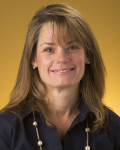
Jennifer Priestley is a Professor of Statistics and Data Science at Kennesaw State University. She is the Director of the Ph.D. in Analytics and Data Science and is credited with developing the country’s first Ph.D. program for Data Science. Priestley seeks to help close the data science skills gap through a multi-disciplinary approach that combines teaching of data science theory with getting practical hands-on experience. Prior to her teaching career, Jennifer worked for 11 years in the private industry. She received her B.S. in Economics from Georgia Institute of Technology, her MBA from Penn State University, and her Ph.D. in Decision Sciences from Georgia State University.
Datanami: Hi Jennifer. Congratulations on being selected as a Datanami 2016 Person to Watch. You created the country’s first Ph.D. program for data science. Why is it important that we have this program?
Jennifer Priestley: When we first proposed a Ph.D. in Analytics and Data Science in 2012, we were the only university in the country talking about the degree. Today, there are several universities with Ph.D. programs in Data Science including University of Tennessee, University of Southern California, University of Maryland, Bentley University. I expect that over the next few years, we will see increasingly more Ph.D. programs in this space.
So, let’s return to your question. Why are these programs important?
The country is facing a talent shortage – we are not producing enough people with deep analytical skills to meet the demands of the marketplace. This “talent gap” is well documented and is a running theme at conferences around the country.
As the primary “farm system” for creating new talent, the academic community – most of which is funded directly or indirectly through taxpayers and businesses in their states – has a fiduciary responsibility to pivot their curricula to meet the demands of the market.
But there is a “shadow” talent gap that is less talked about. That is the talent gap in academia – there are NO professors in the country who hold a Ph.D. in Data Science – the discipline is still in its nascency. As faculty, we have degrees in Computer Science, in Software Engineering, Statistics, in Applied Mathematics…but not in Data Science. And, I think most would likely agree that data science is an inherently interdisciplinary domain that needs to draw in some way from all of these areas – in addition to the Business School. Historically, universities don’t do interdisciplinary well – its not in their nature. But, that is what has to happen to develop a Data Science curriculum. I like the quote from Josh Wills (appropriately sent through Twitter) that the Data Scientist is the “Person who is better at statistics than any software engineer and better at software engineering than any statistician”. The “Priestley Corollary” to this quote is that the data scientist is the “Person who is better at explaining the business implications of the results than any scientist and better at science than any business school student” (can someone Tweet that out please?).
While any organization can tell you how difficult it is to staff their data science teams – try talking to a Dean or a Provost who is overseeing a search for professors who can develop and teach a data science curriculum. The talent simply is not out there right now. And, if it is, chances are that a public university is going to struggle to pay a competitive salary.
So, we find ourselves with a conundrum – the academic community is ramping up programs in data science to meet the needs of the marketplace, without faculty who have formal training in data science. It’s a bit like when you are on the plane and they say “please put on your own oxygen mask before helping the person next to you…”.
So, we have two sets of talent gaps in this country – one in the private sector and one in academia. A Ph.D. in data science can help address both.
The Ph.D. in Analytics and Data Science at Kennesaw State has been developed to bridge the divide between academia and industry. The program has equal emphasis on application and theory…on real projects and scholarship. Students take courses in Computer Science, Mathematics, Statistics and then some area of application (e.g., Finance, Biology, Marketing, Psychology). Graduates of the program have the option to go into organizations as an applied Data Scientist…or go into academia to teach the next generation of Data Scientists. And…some want to do both simultaneously – work as a Data Scientist while having a university affiliation.
This purposefully crafted duality of the application/research orientation of our program is why the program has been so successful – we are running about 7 applications per seat right now. Data Science is, by definition, applied. “Theoretical” data science makes no sense. So, any Ph.D. program in Data Science needs to emphasize research in application. You can see this in the emerging academic journals in Data Science and Big Data – they have a very strong applied orientation.
So why are these programs important? I think they are critical to contributing to the solution to the talent gap – both directly as individuals who can go into these positions as working data scientists, but also as academics who can help train the next generation of data scientists.
Datanami: Before you became a distinguished professor you worked for a number of years in private industry. How did your experience prepare you for the work in data science education that you’re now doing at Kennesaw State University?
Prior to coming into academia, I worked for 11 years in the private sector. I had the good fortune to work for some great companies including Accenture and Visa EU in London. Most of the work that I did was client facing and involved the translation of data into meaningful information to solve a business problem. I feel confident that those experiences make me a much more effective professor. And, I think it gives me more credibility in the classroom – because I am not just teaching from a textbook – I have actually done it. I regularly say to my students “this is what the theory says…but this is what it looks like in practice…”.
Most of our analytics faculty has some kind of work experience like mine outside of academia – and I think that is our “secret sauce” in Data Science. We have faculty who have previously worked at Ford, Thompson Reuters, Children’s Healthcare in Cincinnati, MD Anderson, LexisNexis, The National Institutes for Health, AT&T, MasterCard…and we bring all of that into the classroom. So, no matter which area of application of data science a student is interested in – Biology, Marketing, Manufacturing, Finance…we have someone on faculty who has done it.
Datanami: Generally speaking, on the subject of big data, what do you see as the most important trends for 2016 that will have an impact now and into the future?
Law and Ethics.
We do a great job of teaching students what they CAN do…but I think as a discipline we do a poor job of teaching students what they SHOULD (or SHOULD NOT) do. And, I don’t mean this from a morality perspective – I don’t think it’s our place to impose moral standards on students – but rather from an awareness perspective. It’s easy to lose sight of the fact that each one of those millions and millions of rows of data is a person – an individual. Or that that data represents very personal very sensitive information about someone and needs to be treated as such. Any data science curriculum should include discussions – if not a full course – on the legal and ethical implications of working with big data.
Datanami: Outside of the professional sphere, what can you tell us about yourself – personal life, family, background, hobbies, etc.?
I am a mom with two kids (13 and 11), a husband and two very needy cats. I like to run 5Ks and 10Ks with my kids (I used to run marathons when I was young and skinny – now 10Ks are really my max distance). When I can get them disconnected from their electronics, I like hiking with my family in North Georgia. When I am not reading statistical papers or learning new programming languages, I read a lot of presidential biographies and Catholic theology.
Datanami: Final question: Who is your idol in the big data industry and why?
I am a big fan of Bill Franks. He makes Data Science cool – I think he is sort of the Neil deGrasse Tyson of Data Science.


